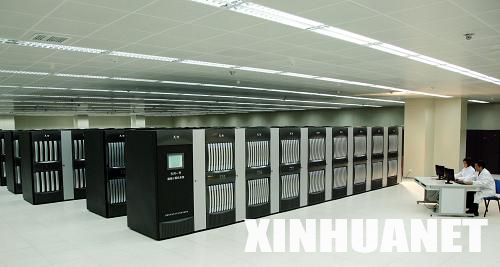A better title would have been Postcard: People’s Republic of China, except for the fact that I’m in Arizona. Let’s begin with the possibly impending rare-earth metals shortage.
What are rare-earth metals?
A shortage of rare-earth metals seems arcane. What are they? Depending on who you ask, they are 15 to 30 elements with the following common properties: A silvery or grey appearance, high luster that is quick to tarnish in air, and very high electrical conductivity.
Rare-earth metals are not all that rare. They earned their name from the tedious process by which they were extracted prior to advancements in metallurgy in the 1950s.

Lanthanide series and a few more: The rare-earth elements
Here is a most beautiful periodic table of the elements by Perioden System. If you like the periodic table, I recommend having a look at their interactive version. Super-high resolution downloads are available free.
The 17 elements that are universally considered rare-earth elements are also known as the Lanthanides. The name is appropriate, as it is derived from the Greek lanthanon, meaning “I am hidden”. The Lanthanides are on the bottom drop-down of the chart, numbers 57 lanthanum, through 71 lutetium. Elements scandium and yttrium comprise the rest of the rare-earth metals. Several members of the second series, the Actinides, are sometimes classified as rare-earth, including thorium and uranium.
Precious metals, which are refined from the elements gold, platinum, palladium, silver, rhodium and iridium are NOT rare-earth metals. This confusion is common. Referring to the periodic table will clarify, as precious metals have atomic numbers 45 through 47 and 77 through 79.
China mines 95% of the world’s rare-earth metals

Impending rare-earth metals shortage?
The People’s Republic of China has global dominance of rare-earth ore mining. This presents a geopolitical risk exposure, as the United States and the rest of the world have been highly dependent on China as a source of rare-earth metals for decades.
Demand for rare-earths is expected to increase as green technologies gain more acceptance and use. Special batteries use rare-earth metals, such as the batteries in mobile phones. Hybrid car motors require magnets made from dysprosium, element 66. Permanent magnets made from neodymium are the strongest magnets made, and used for munitions and guidance systems. All of the heavy rare-earth metals such as dysprosium are mined in China.
“Heavy” refers to heavy nuclei, which simply means a larger number on the periodic table. In general, the heavier nuclei rare-earth elements are the most sought after.
Expertise is more limited than reserves
Supply is not the only problem. A third of the estimated reserves of rare-earth elements are in the United States. However, concentration of rare-earth mining activity has shifted the world’s rare-earth knowledge base, from the United States and South America, to China. Most of the world’s material scientists and geologists who are experts in rare-earth metal mining and metallurgy reside in China.
Consequences of expertise localization are dramatic. The division of General Motors researching miniaturized magnets shut down its US office and moved the entire staff to China in the late 1990s.
According to a May 2010 article in Physics Today, Concern grows over China’s dominance of rare-earth metals, the owner of Mountain Pass mine in California said,
Little rare-earth expertise remains in the US. I have 17 engineers and scientists competing with over 6000 scientists in China. And I can’t find any students from any university in the US that have any experience with a rare-earths curriculum today.

Rare-earth oxide production per year
On September 1, 2009, China announced plans to cut its rare earth mining quota to 35,000 tons per year in 2010 – 2015, in order to conserve scarce resources. Illegal rare earth mines are common in rural China and release toxic wastes into the general water supply, presenting environmental concerns.









